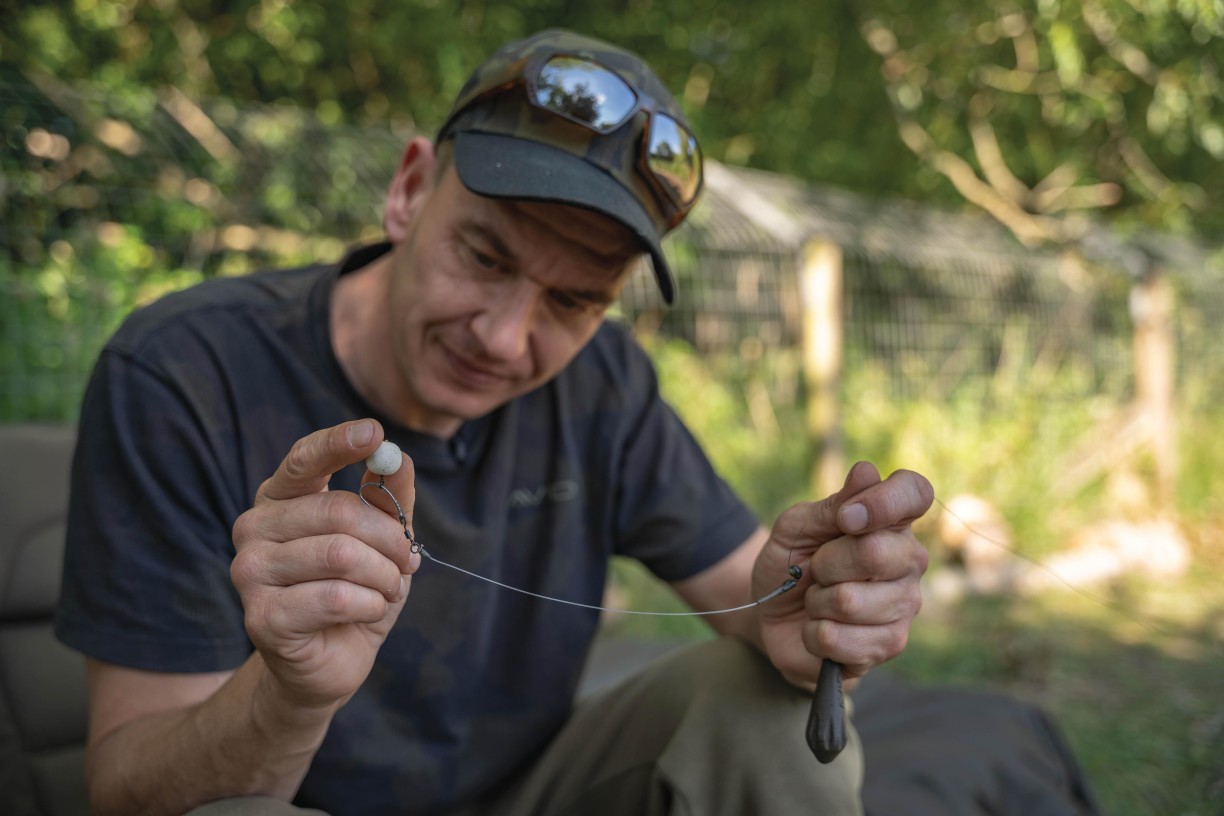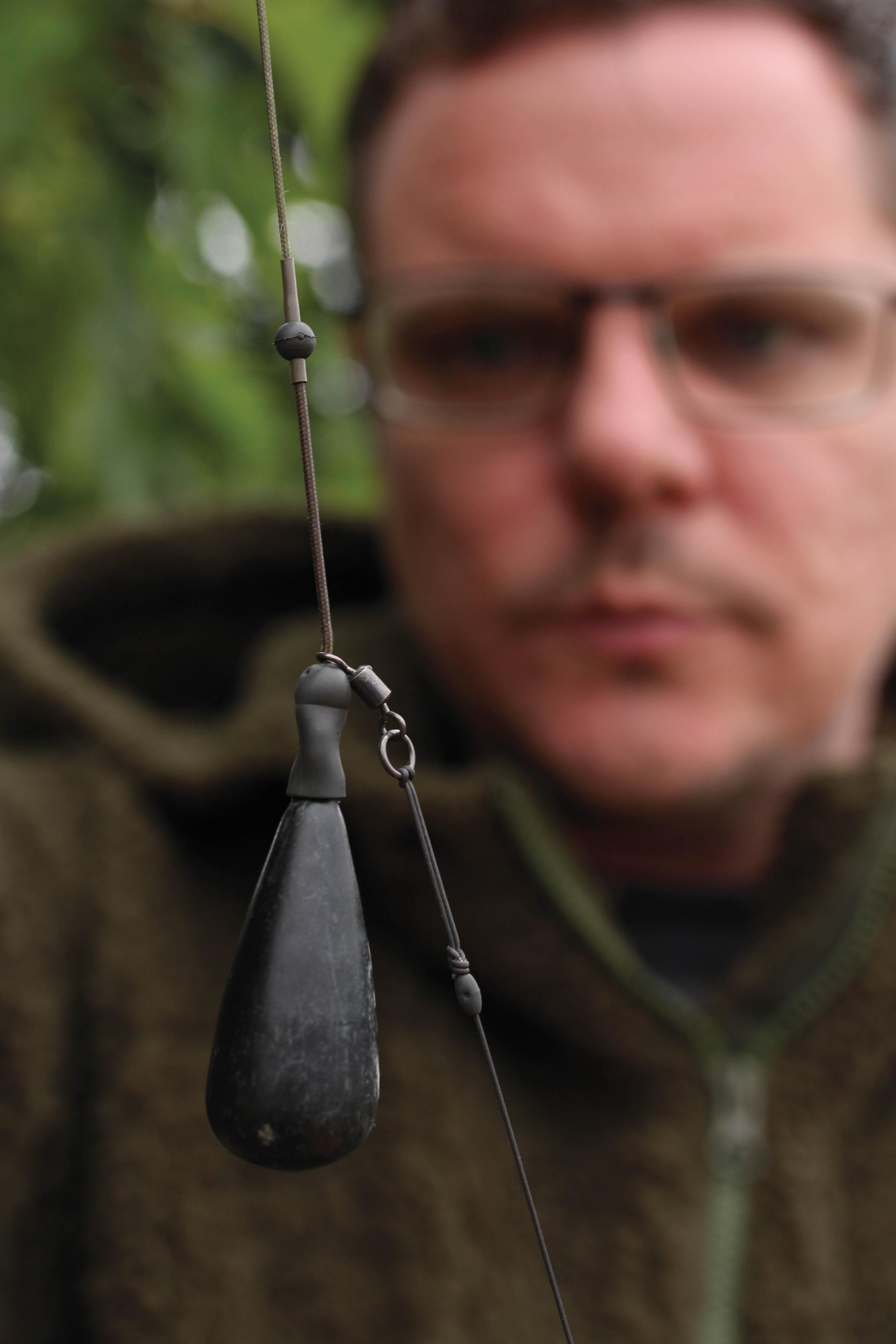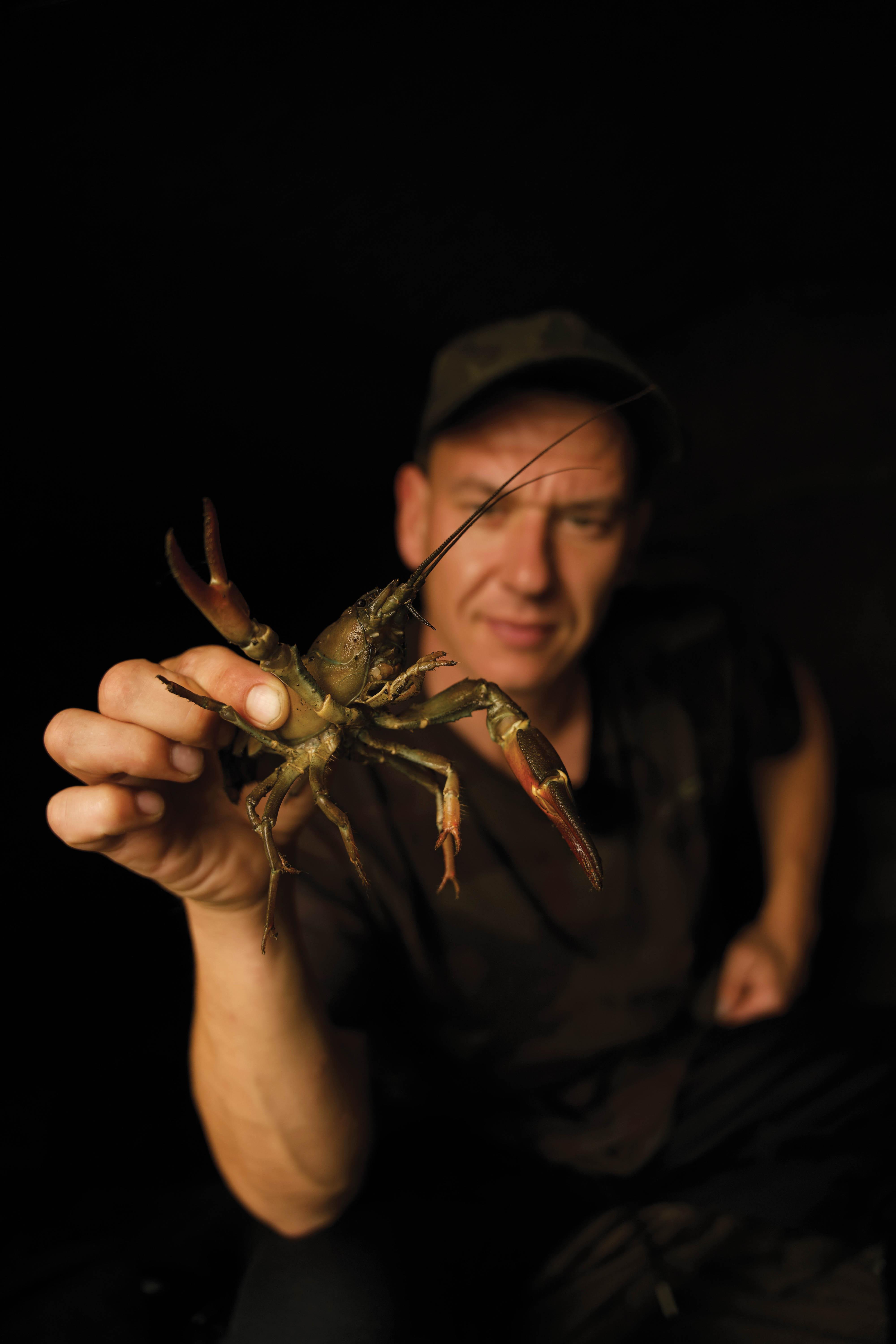Rig Etiquette
Top tips for tidying up your end game

Scotty Karabowicz: ‘The Other Way Round!’
“Quite often people see my rigs and say, “you’ve put the swivel on the wrong way around mate!” But there’s method in my madness. By putting the smaller eye of the size 8 ring swivel onto my leadcore leader, the swivel sits more perpendicularly, meaning the rig is hanging more freely and is ‘stood off’ away from the lead. I’ve found this creates less tangles, particularly when using coated braided hooklinks. I like to add a Tungsten Dropper up to the Figure-Of-Eight Loop knot, that is ‘loop-to-looped’ to the large ring of the swivel. Not only does this give the rig a stiffer section near the swivel, the weight of the dropper also helps keep the hooklink away from the leader in flight and increases its anti-tangle capabilities.”
Lewis Read: ‘Perfectly aligned’
“I love mounting hookbaits on a D rig. The way that the hookbait separates, allowing the hook to turn and drop, is, in my opinion, unbeatable. Keeping the teardrop-shaped ‘D’ lovely and tidy, sitting perpendicular to the back of the hook shank, is vitally important. Bedding the knot down and keeping the tag end straight and in alignment with the shank is also vital, as is having the hook straight to the hooklink. Luckily, this is easy to achieve by using the tag end that forms the D to straighten the hook, keeping the hook point in alignment with the hooklink exiting the hook eye. Making sure that all the individual aspects of the rig are perfect will catch you more.”
Joe Morgan: ‘Go Short!’
“Go shorter! The lead is what hooks the fish and the shorter the rig, the quicker the lead comes into play. 3.5- to 4-inches is the optimal length for me, as it allows just enough for the hook to go into the mouth before the weight of the lead pulls the hook home past the barb. Once past the barb, they simply can’t eject it.”

Julian Cundiff: ‘Home rig tying’
“I’ve always been a big believer (thanks Andy Little) that fishing effectively is about watching the water not tying rigs up, so all my rigs are pre-tied, including leaders in case I get cut off, need to swap set-ups etc. I assemble them at home and then store them around the card that the bare leaders came packaged on. All I need to do is attach the main line to the leader and I’m back in the game.”
Simon Crow: ‘Off to the side’
“If you’re a fan of using the Knotless Knot, then consider forming the Hair along the side of the hook shank instead of the back. This difference may only be marginal, but it will increase the chances of the hook twisting in the carp’s mouth. I’ve been tying mine this way for thirty-plus years and I still do it today.”
Mike Kavanagh: ‘Super safe’
“Probably the most important safety component along a leadcore leader helicopter rig set-up is the top bead. There are many to choose from that can release the rig when tested by hand on the bank, but controversially not always so when a carp is left trailing terminal tackle after the main line is cut in a snag or more frustratingly by zebra mussels. One way I have found greatly reduces the risk of entrapment can be studied in the photograph. Adjustable, simple and does the job of stopping the hooklink riding up the leader, but folds back to allow the swivel ring to pass over it under real pressure.”
COMBATING CRAYFISH!
Words of wisdom from the chap who conquered Burghfield—a crayfish-infested venue—Greg Ellis…
“Crayfish can be a real headbanger. However, if you can mentally beat them—and you treat the mudbugs as your edge—you can thrive on those infested waters while other anglers lose their heads and throw in the towel.
“The Ronnie is the most effective rig I have ever come across when it comes to combating crayfish, and that’s down to how I tie it. Whilst the boom can be tied from any material, when tackling crayfish I opt for Avid’s Outline Fluorocarbon in 40lb. This ensures maximum resetting and anti-tangle properties.
“I always use rubber boilie hookbaits but it’s how you attach them that really makes the biggest difference. If you tie them to your rig with bait floss, the crays can still pull them off. My advice is to use a supple braid and then knot it around a Hair stop. I secure it further by blobbing the tag ends. Okay, fair point, it’s a bit of an eyesore, but it’s 100% effective and bulletproof.
“Not only is this set-up crayfish-proof, it’s also bird-proof. Even if I venture elsewhere and there are no crayfish, I still use this set-up. It’s my go-to rig: the faithful ‘Reggie’, as I’ve now christened it!”




